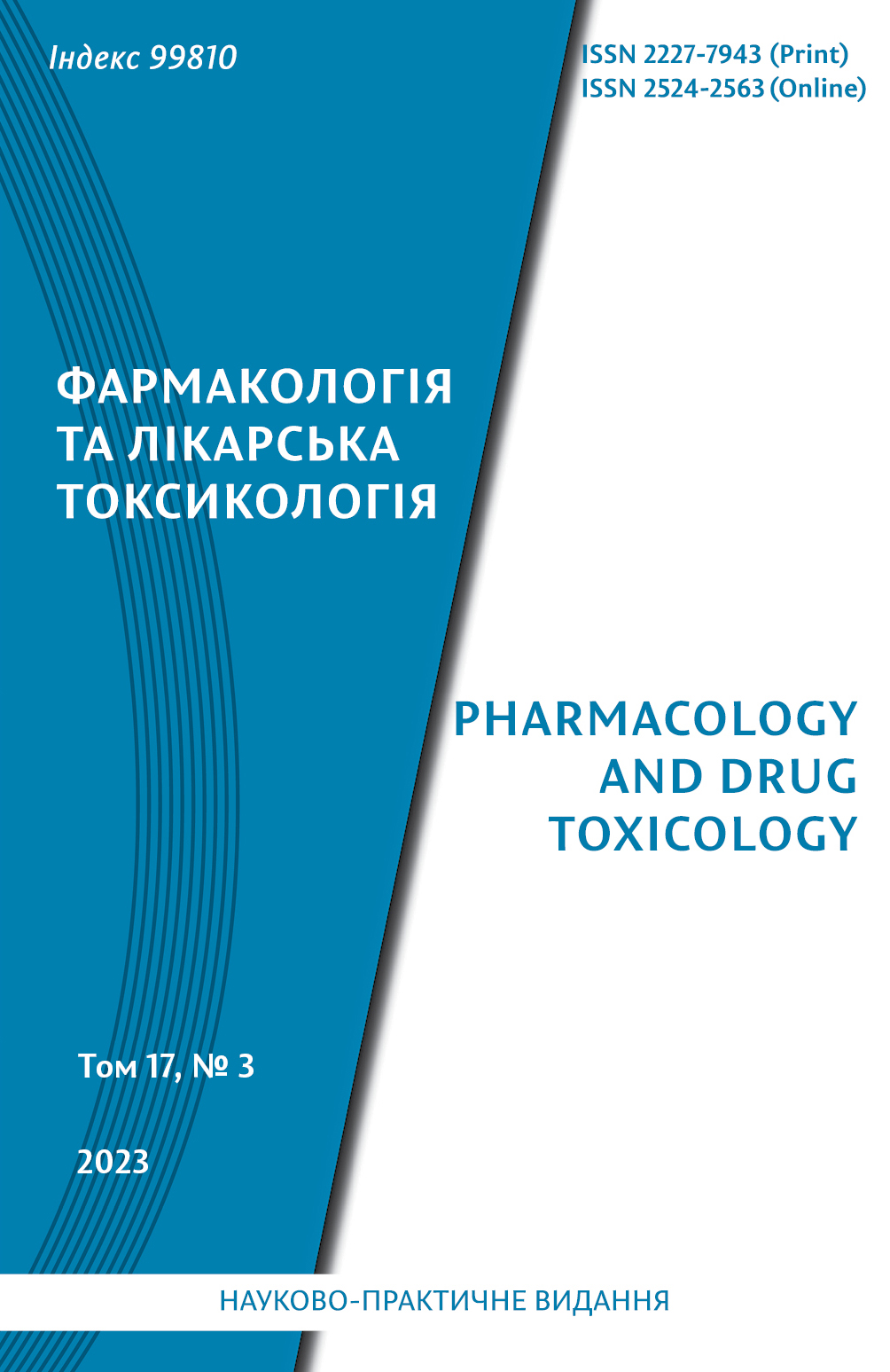Abstract
Propoxazepam (a benzodiazepine derivative) is an innovative analgesic that can inhibit both acute and chronic pain with anti-inflammatory and anticonvulsant components, which depends on the state of the GABA receptor. There is currently no information on the participation of the relevant isoforms (alpha subunits) of this receptor in the manifestation of the spectrum of pharmacological action of propoxazepam.
The aim of the research is to determine the participation of some GABA receptor isoforms (subunits α1βγ2, α2βγ2, α3βγ2 and α5βγ2) in the course (0,5–4 hours) of the corresponding therapeutic effects of propoxazepam using pharmacological analysis methods.
The studies were carried out in vivo on white outbred male mice (20–25 g). The studied compounds were administered intraperitoneally at equimolar doses: propoxazepam –10 mg/kg and diazepam – 6.82 mg/kg. Determination of behavioral indicators in the «open field tests», «rotarod test», «horizontal crossbar», «elevated plus maze» and «hot plate» were carried out 0.5, 1, 2 and 4 hours after administration.
In the «open field» test, propoxazepam (10 mg/kg) when administered intraperitoneally, exhibits pro- nounced inhibiting and sedative effects that outweigh the effects of diazepam. In the «rotarod test» and «horizontal crossbar» test, propoxazepam showed a pronounced myorelaxant effect, which is comparable to the effect of diazepam and moderately exceeds it in some parameters. In the «elevated plus maze» test propoxazepam showed a moderate anxiolytic effect at the level of diazepam. In the «hot plate» test the analgesic effects of propoxazepam and diazepam were similar. The expressiveness of the sedative, anti- anxiety and, partially, myorelaxant effects of the test sample at a dose of 10 mg/kg exceeded that of dia- zepam at the equimolar dose (6.82 mg/kg).
According to the intensity, the pharmacological effects can be arranged in the following order: analge- sia = sedation > anxiolytic action > impairment of movement coordination > myorelaxation, which generally corresponds to the dependence of the effects of 1,4-benzodiazepine derivatives on concentration (the effect on muscle tone and movement coordination occurs at higher doses, while the development of anxiolytic effect is observed at lower doses). Taking into account the correspondence between the tests and GABA-R subunits, the following order of activity of propoxazepam can be proposed according to the intensity of the effect: (α2/α3, brain) = α1 > (α2/α5) > (α2/α3 spinal cord).
Discrepancies between the results of behavioral experiments and affinity to different subunits of GABA-R may be related to the fact that in vitro receptor studies were performed on isolated systems, and in the body receptors are expressed in different cells, and the final pharmacological effect is an integral result of their interaction.
